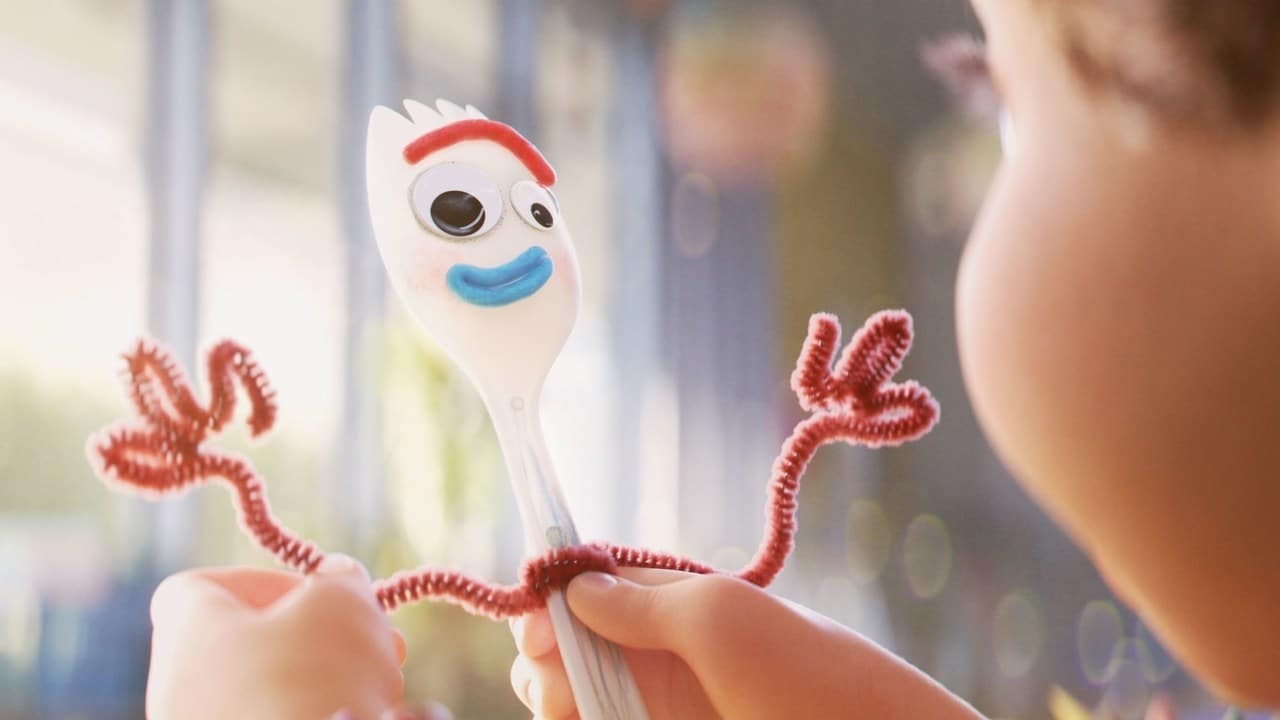Watching ‘Toy Story 4’ reminded me that less is more when it comes to my kid’s toys

Forky is a reminder that parents don't necessarily have to break the bank in purchasing toys for the little ones in our lives
A recent trip to the movie theater had me brimming with excitement to reunite with Woody, Buzz, and the crew of Andy’s (er, Bonnie’s?) toys in the Toy Story franchise’s new installment. Sure enough, my family laughed at the adventures of the cast, but it was a newcomer to the gang that really stole the show: a plastic spork named Forky.
While his reluctance to accept his place was charming and sweet, Bonnie’s creation of Forky, and her subsequent attachment to him as her new favorite toy, points at a bigger picture—what constitutes a toy? Likewise, what does a child really need to be entertained?
The film’s inclusion of such a common, utilitarian object as a chosen plaything serves as a reminder that children’s imaginations are a powerful thing, and—when left to their own devices—kids are quite capable of having fun with far less than our society typically deems necessary.
Forky is a throwback to a time when less was more, and when families’ homes weren’t miniature toy stores.
I remember recently being spellbound as I watched my daughter engrossed in play with a handful of rocks. Each pebble had its role—mommy rock, daddy rock, baby rock, etc—and she carried on with a captivating scene encompassing equal parts comedy and tragedy. It was a rock family saga, and frankly, I was mesmerized.
Despite a house full of flashy, modern, (and sometimes expensive) toys, I’ve found that some of the most creative play comes from the most unexpected “things” that most adults would consider non-toys. Kids have a unique way of looking at things, and often the items they gravitate toward as their preferred toy may leave parents not only scratching their heads, but also howling in laughter.
Kitchen accessories seem to be a favorite for many little ones, as I remember my own niece insisting on carrying a serving spoon everywhere with her. These inanimate objects function as the perfect plaything for children, as their minds are free to create whatever story or fantasy they desire. The make-believe is endless.
Other favorites for my kiddos include shoelaces, ropes, or yarn, which have infinite aliases—stuffed animal leashes and zip-lines being their go-tos. And who can forget the magic of cardboard boxes and of course bubble wrap. We’re talking hours of fun and play.
After watching the film, I looked around my house at the abundant number of toys that my own children possess. Then I turned around and watched as they chose to stack Tupperware containers and throw foam koozies at them in a competitive game of kitchen bowling.
So yeah, we’re all probably a little guilty of overindulgence with it comes to our kids. To be honest, it’s fun to watch their eyes light up upon receiving a new toy at their birthday or other holiday. And I’m not arguing that those practices need to change completely. Rather, let’s not forget the power of minimalism and its place in our lives. Let’s encourage resourcefulness and creativity.
Behind the fun and nostalgia of the Toy Story series are important lessons and messages. In today’s culture where more is more, Forky is a reminder that parents don’t necessarily have to break the bank in purchasing toys for the little ones in our lives. In many cases, a “spork” will do.


































